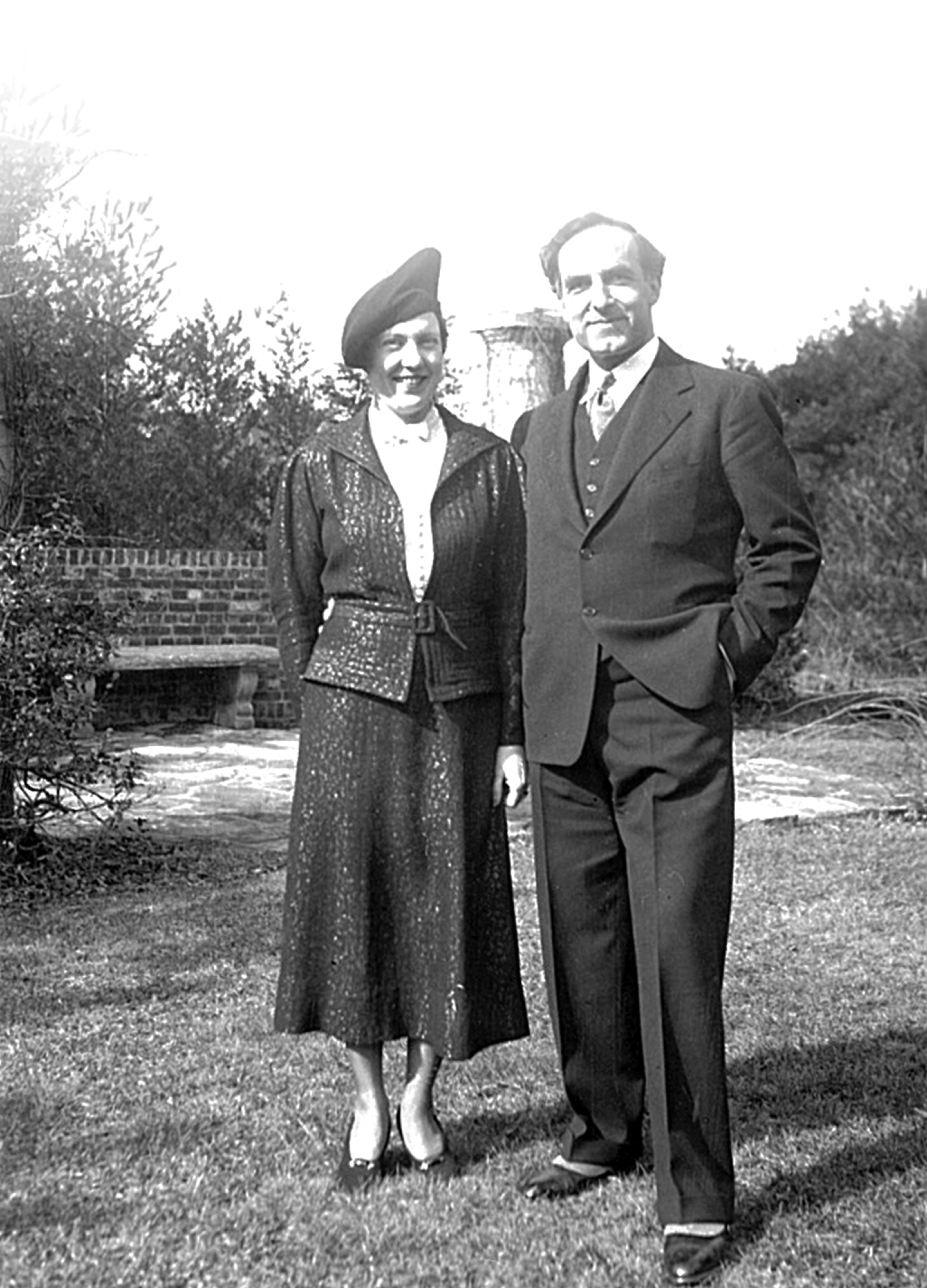One of Mochi’s proudest achievements, which came at the end of this period, is the Ladies of the White House series, created from 1941-1943; commissioned by World Book Encyclopedia. The singular portraits show each first lady in her inaugural gown against a contemporary White House background, from Martha Washington to Eleanor Roosevelt, whom Mochi met upon completing the series.
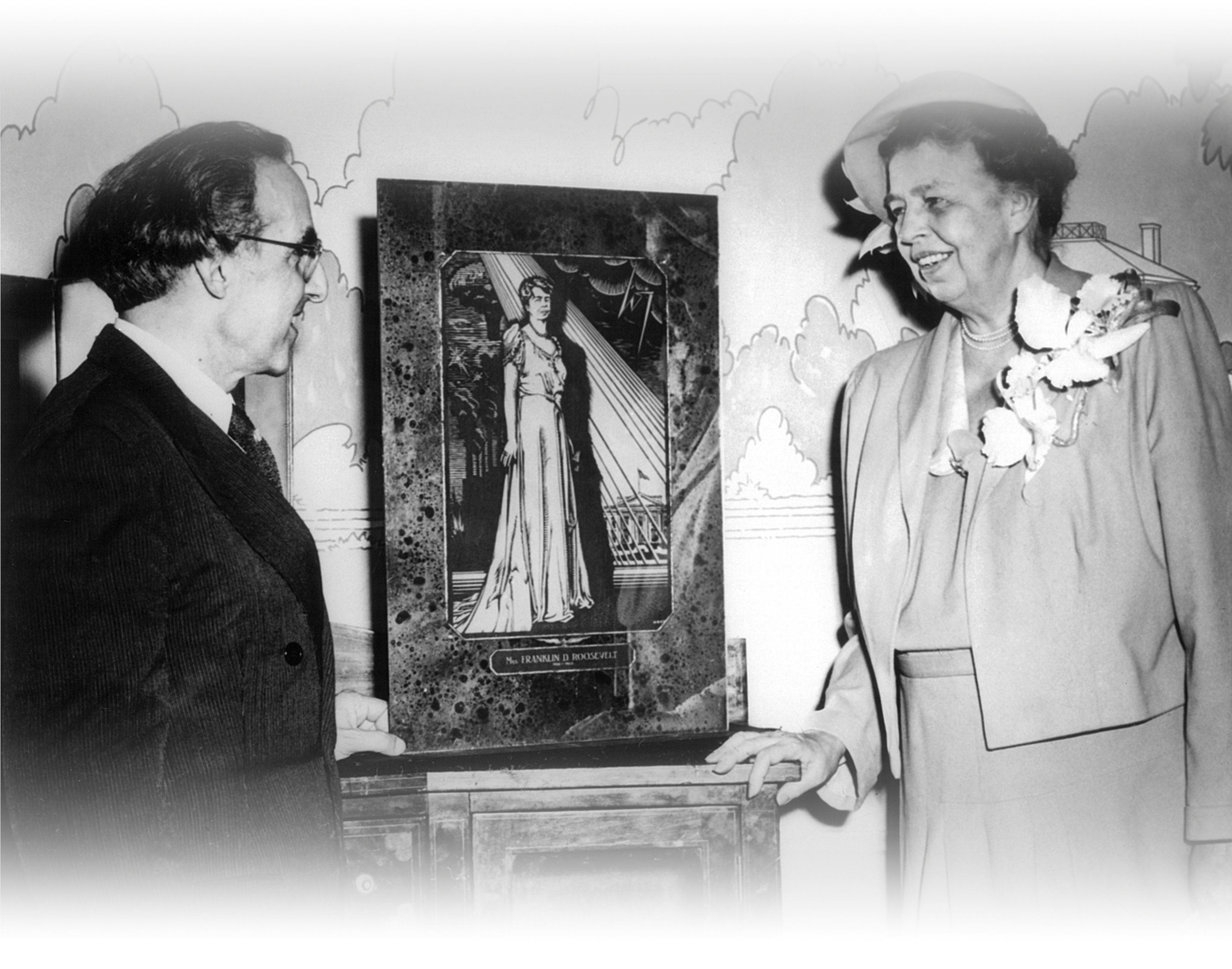
The result of three years of tireless research and craftsmanship, the works are now housed in the Smithsonian Institution’s National Museum of American History. View Series
One of his first major projects in America, this silk mosaic masterpiece was commissioned and displayed by the palatial St. Regis Hotel in New York City in 1928. The gorgeous silk work shone with an intoxicating array of colors and spread Mochi’s fame across the city and soon, the country. At the time, the piece was valued at $100,000—
well over $1 million in today’s dollars.
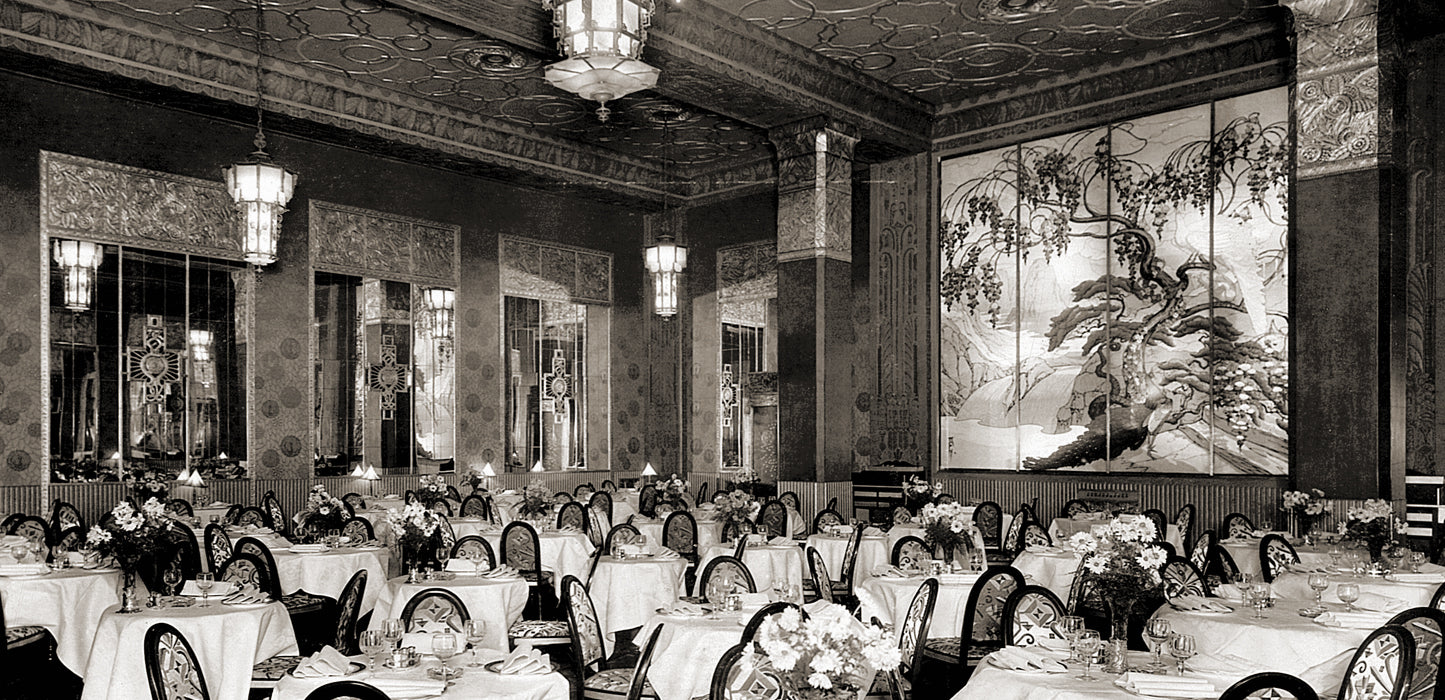
From his earliest childhood, Mochi was transfixed by carts and carriages. His transportation series of over 100 pieces is a labor of love, an on-going project Mochi returned to throughout his life.
View Collection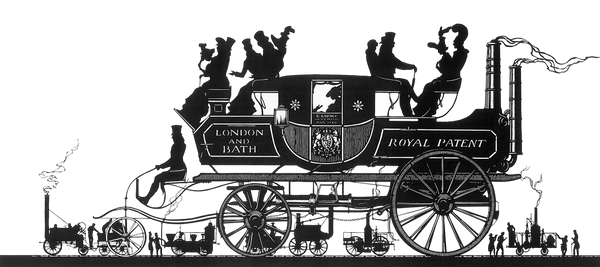
As new technology in the late 30s allowed intricate images to be affixed to enamel tabletops, Mochi crafted several outlines for Tepco, the leading purveyor of such tables, still prized by collectors.
View Commercial WorkLike many artists during the Depression, Mochi found success in commercial works, creating magazine illustrations. This leaping tiger, commissioned by Texaco, shows Mochi’s singular skill at capturing life in two dimensions.
View Magazine IllustrationsA rare instance of Mochi’s paper work in three dimensions, these window displays for department stores reveal the artist’s sculptural training and prowess.
View Window Displaysbook publishings
Readers discovered Ugo Mochi through his black-and-white illustrations, each a striking image cut in paper, an ideal medium for his poetry of animals in outline. African Shadows (Literary Guild, 1933) brought scientific attention to the artist’s unique work. It led to Hoofed Mammals of the World (Scribner, 1953), an extraordinary collection of over 200 images, cut to scale, is today a rare, sought-after volume. This collaboration of artist and author T. Donald Carter, curator of mammals at the American Museum of Natural History was followed by other artist/author books.
Ugo Mochi’s vivid cut images illustrate exploits in the life of a president who was at heart a naturalist in Theodore Roosevelt's America (Devin-Adair, 1955), a book edited by Farida Wiley of the American Museum. For Austin Rand, curator at the Chicago Museum of Natural History, Mochi deftly cut birds in outline that are the elegant chapter headings for American Water & Game Birds (Dutton, 1956).
Another book collaboration ensued. As a student in the mammal department at the American Museum, Dorcas MacClintock had been impressed by the artwork for the hoofed mammals that Ugo Mochi brought in for curatorial approval. Most of all she had admired the small cut outs the artist intended for a story about a young giraffe. Returning east after graduate school, work at the California Academy of Sciences, and a time in East Africa, she asked about the little giraffe. Her inquiry led to a series of books they would do together, as well as to a deepening friendship between author and artist. A Natural History of Giraffes (1976), winner of the New York Academy of Science Book Award, was the first of four books, all published by Scribner. It was followed by A Natural History of Zebras (1976), Horses As I See Them(1980), and African Images (1984).
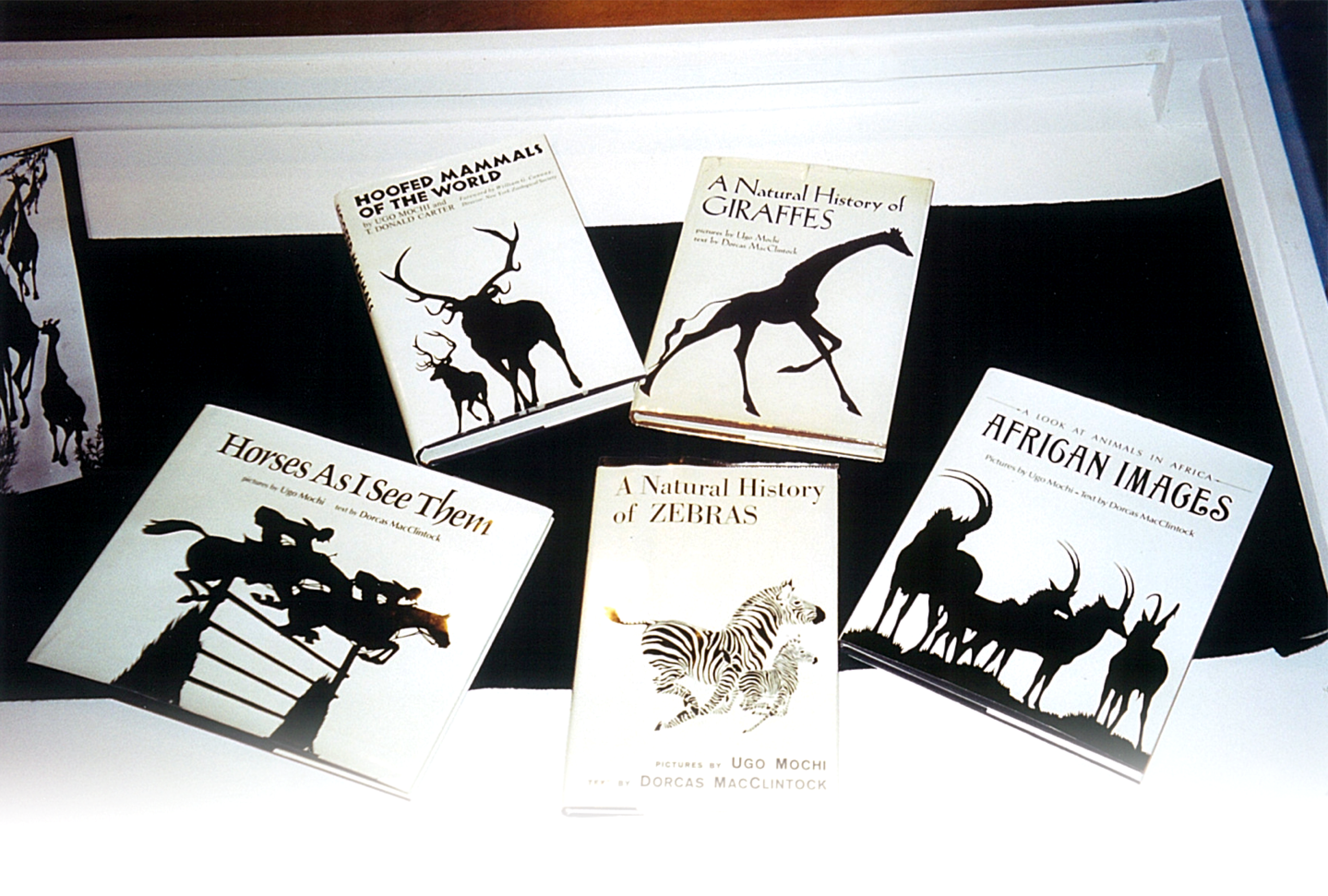
In 1928, Mochi emigrated from Italy to America. His wife was already here planning a Bach recital. They settled in New York City. It wasn’t long before he began work. Sadly, soon after the unveiling of his St. Regis Panel, his beloved wife died. Mochi was again alone in a foreign country. Later, Mochi would marry again and raise a family. America would become his new home.
The Mochi family moved from New York City and settled in New Rochelle, where he worked diligently from his home studio. An active part of the New Rochelle Art Association, Mochi co-sponsored events with Norman Rockwell and other local artists.
